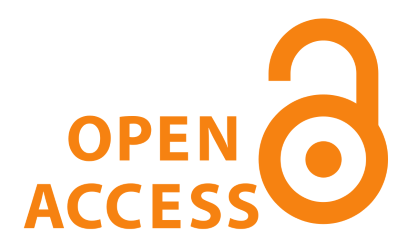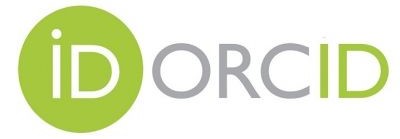Antioxidant Properties of Pistacia Vera L. on Cardiovascular Diseases Antioxidant Properties of Pistacia Vera L. on Cardiovascular Diseases
DOI:
https://doi.org/10.5281/zenodo.10436838Keywords:
Cardiovascular Diseases, Free Radicals, Antioxidant, Pistacia vera L.Abstract
Cardiovascular diseases have an important place among the diseases that threaten our lives. There are diseases of cardiovascular origin such as congenital, coronary, vascular, cerebrovascular, heart failure and hypertension. Stress is one of the leading causes of these diseases. The main reason for this is free radicals. Free radicals have a very important place, especially in the fields of biology and medicine. Oxidative stress occurs as a result of the imbalance between the formation of reactive oxygen species and the elimination of toxic substances. reactive oxygen species damage cellular macromolecules, causing lipid peroxidation, nucleic acid and protein changes. As a result of years of research, the complex interaction between oxidative stress and oxidant and antioxidant defense systems has been revealed. An important pathophysiological link has been established with many disorders and diseases. Since antioxidants are widely used in the treatment of free radical-induced diseases, new natural sources of antioxidants are important. Natural Pistacia vera L. (PvL) is among the foods with high antioxidant potential. In recent studies, it has been determined that Pistacia vera L., which contains high phenolic components, has strong antioxidant properties. This review aims to provide information about free radicals, antioxidants sources, Pistacia vera L. and its effects on cardiovascular diseases.
References
Azab AE, Albasha MO, Elsayed ASI. Prevention of nephropathy by some natural sources of antioxidants. Yangtze Medicine. 2017;1:235- 66.
Bisht S, Faiq M, Tolahunase M, Dada R. Oxidative stress and male infertility. Nat. Priest Urol. 2017;14(8):470-85.
Pham-Huy Li, Hua He, Pham-Huy C. Free radicals and antioxidants in disease and health. Int J Biomed Sci. 2008;4(2):89–96.
Kim GH, Kim JE, Rhie SJ, Yoon S. The role of oxidative stress in neurodegenerative diseases. Exp Neurobiol. 2015; 24(4):325-40.
Glasauer A, Chandel NS. ROS. Curr Biol. 2013;23(3):R100–2.
Prasad S, Gupta SC, Tyagi AK. Reactive oxygen species (ROS) and cancer: The role of antioxidative nutraceuticals. Cancer Lett. 2017;387:95-105.
Firuzi O, Miri R, Tavakkoli M, Saso L. Antioxidant therapy: current status and future prospects. Curr. Med. Chemistry. 2011;18 (25):3871-88.
Al-Mamary M, Al-Meeri A, Al-Habori M. Antioxidant activities and total phenolics of different types of honey. Nutr Res. 2002;22:1041–47.
Aguilar TAF, Navarro BCH, Pérez JAM. Endogenous antioxidants: review of their role in oxidative stress. Master Regulator of Oxidative Stress-Transcription Factor Nrf2, InTech. 2016; London, IntechOpen. 4-19.
Bouayed J, Hoffmann L, Bohn T. Exogenous antioxidants - double-edged swords in the cellular redox state: beneficial effects to health at physiological doses, harmful effects at high doses. Oxide. Med. Cell. Longev. 2010; 3:228 – 237.
Azab AE, Albasha MO. Hepatoprotective effect of some medicinal plants and herbs against hepatic disorders induced by hepatotoxic agents. J Biotechnol Bioeng. 2018;2(1):8–23.
Dai F, Miao Q, Zhou B, Yang L, Liu ZL. Protective effect of flavonols and their glycosides against free radical-induced oxidative hemolysis of red blood cells. Life Sci. 2006; 78(21):2488–93.
Grace MH, Esposito D, Timmers MA, Xiong J, Yousef G, Komarnytsky S, et.al. Chemical composition, antioxidant and anti-inflammatory properties of pistachio hull extracts. Food Chem. 2016;210: 85–95.
Fogacci F, Cicero AFG, Derosa G, Manfredi Rizzo M, Maddalena Veronesi M, Borghi C. Effect of pistachio on brachial artery diameter and flow-mediated dilatation: a systematic review and meta-analysis of randomized, controlled-feeding clinical studies. Crit Rev Food Sci Nutr. 2019;59(2):328-35.
Mohammadifard N, Salehi-Abargouei A, Salas-Salvadó J, Guasch-Ferré M, Humphries K, Sarrafzadegan N. The effect of tree nut, peanut, and soy nut consumption on blood pressure: a systematic review and meta-analysis of randomized controlled clinical trials. Am J Clin Nutr. 2015;101(5):966–82.
Kay CD, Gebauer SK, West SG, Kris-Etherton PM. Pistachios increase serum antioxidants and lower serum oxidized-LDL in hypercholesterolemic adults. J. Nutr. 2010;140, 1093–1098.
Kendall CW, West SG, Augustin LS, Esfahani A, Vidgen E, Bashyam B, et. al. Acute effects of pistachio consumption on glucose and insulin, satiety hormones and endothelial function in the metabolic syndrome. Eur J Clin Nutr. 2014; 68(3):370–75.
Wells B, Mainous AG, Everett CJ. Association between dietary arginine and C-reactive protein. Nutrition. 2005; 21(2):125–130.
Gillingham LG, Harris-Janz S, Jones PJH. Dietary monounsaturated fatty acids are protective against metabolic syndrome and cardiovascular disease risk factors. Lipids. 2011;46(3):209–28.
Hercberg S, Kesse-Guyot E, Druesne-Pecollo N, Touvier M, Favier A, Latino-Martel P, et.al. Incidence of cancers, ischemic cardiovascular diseases and mortality during 5-year follow-up after stopping antioxidant vitamins and minerals supplements: A postintervention follow-up in the SU.VI.MAX Study. Int J Cancer. 2010;127(8):1875–81
Gentile C, Perrone A, Attanzio A, Tesoriere L, Livrea MA. Sicilian pistachio (Pistacia vera L.) nut inhibits expression and release of inflammatory mediators and reverts the increase of paracellular permeability in IL-1â-exposed human intestinal epithelial cells. Eur J Nutr. 2015;54(5):811–21.
Karppi J, Nurmi T, Kurl S, Rissanen TH, Nyyssönen K. Lycopene, lutein and β-carotene as determinants of LDL conjugated dienes in serum. Atherosclerosis. 2010; 209(2):565–572.
Martorana M, Arcoraci T, Rizza L, Cristani M, Bonina FP, Saija A, et.al. In vitro antioxidant and in vivo photoprotective effect of pistachio (Pistacia vera L., variety Bronte) seed and skin extracts. Fitoterapia. 2013; 85:41–48
Peoples JN, Saraf, A, Ghazal N, Pham TT, Kwong JW. Oxidative stress in mitochondrial dysfunction and heart disease. Experience. Mol. Med. 2019;51(12):1-13.
Rodrigo R, González J, Paoletto F. The role of oxidative stress in the pathophysiology of hypertension Hypertension. Pic. 2011;34:431–40.
Cook NR, Albert CM, Gaziano JM, Zaharris E, MacFadyen J, Danielson E, et.al. A randomized factorial study of vitamins C and E and beta carotene in the secondary prevention of cardiovascular events in women: Results of the Antioxidant Cardiovascular Study in Women.Arch. Stajyer. Med. 2007;167:1610–18.
Ki KS, Song CG. Kang aims to target oxidative stress using nanoparticles as a therapeutic strategy in PM cardiovascular diseases. Antioxidant. Redox Signaling. 2019;30:733–46.
Biesalski HK, Grüne T, Tinz J, Zöllner I, Blumberg JB. Re-examination of the effect of antioxidant supplementation on mortality and health in randomized trials. Nutrients. 2010;2:929–949.
Leopold JA. Antioxidants and coronary artery disease: from pathophysiology to preventive therapy. Corona Artery Dis. 2015;26(2):176-83.
Lei XG, Zhu J-H, Cheng W-H, Bao Y, Ho Y-S, Reddi AR, et.al. Paradoxical Roles of Antioxidant Enzymes: Basic Mechanisms and Health Effects. Physiole. Rev. 2016;96: 307–64.
Moser MA, Chun OK. Vitamin C and Heart Health: A Review Based on Findings From Epidemiological Studies. Int J. Mol Sci. 2016;17 (8):1328.
Petyaev IM, Dovgalevsky PY, Klochkov VA, Chalyk NE, Pristensky DV. Chernyshova MP. Effect of lycopene supplementation on cardiovascular parameters and markers of inflammation and oxidation in patients with coronary vascular disease. Food Science & Nutrition.2018; 6(6):1770-77.
Tayebati SK, Tomassoni D, Mannelli LDC, Amenta F. Effect of treatment with antioxidant alphalipoic(thioctic)acidontheheartandkidneymicrovasculatureinspontaneouslyhypertensiveratClin. Exp Hypertens. 2016;38 (1):30–38.
Trujillo J, Chirino YI, Molina-Jijón E, Andérica Romero AC, Tapia E. Kidney-protective effect of the antioxidant curcumin: recent findings Redo. Bio. 2013. 17;1(1):448 –56.
Chen CY, Milbury PE, Lapsley K, Blumberg JB. Flavonoids from almond skins are bioavailable and act synergistically with vitamins C and E to enhance hamster and human LDL resistance to oxidation. J Nutr. 2005;135(6):1366-73.
Terzo S, Baldassano S, Caldara GF, Ferrantelli V, Dico GL, Mulè F, et al. Health benefits of pistachios consumption. Nat Prod Res. 2019;33(5):715–26.
Hernández-Alonso P, Bulló M, Salas-Salvadó J. Pistachios for health: what do we know about this multifaceted nut?. Nutr Today. 2016; 51(3):133-8.
Stone NJ, Robinson JG, Lichtenstein AH, Bairey Merz CN, Blum CB, Eckel RH, et.al. 2013 ACC/AHA guideline on the treatment of blood cholesterol to reduce atherosclerotic cardiovascular risk in adults: a report of the American College of Cardiology/ American Heart Association Task Force on Practice Guidelines. Circulation.2014;63(25 Pt B):2889–934.
Freisling H, Noh H, Slimani N, et al. () Nut intake and 5-year changes in body weight and obesity risk in adults: results from the EPIC-PANACEA study. Eur J Nutr. 2018;57(7): 2399–2408.
Kasliwal RR, Bansal M, Mehrotra R, Yeptho KP, Trehan N. Effect of pistachio nut consumption on endothelial function and arterial stiffness. Nutrition. 2015;31(5):678–85.
Downloads
Published
How to Cite
Issue
Section
License
Copyright (c) 2023 MEHES JOURNAL

This work is licensed under a Creative Commons Attribution 4.0 International License.









